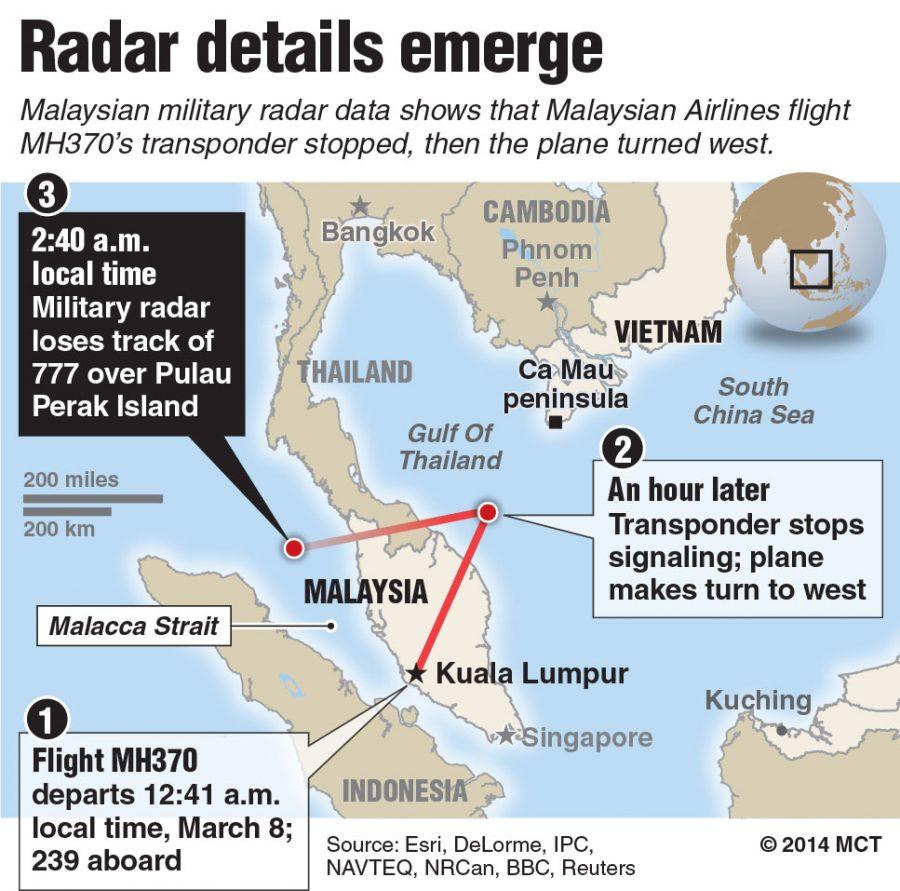
On Saturday, March 7, the ill-fated Malaysian Airlines flight MH370 departed from Malaysia en route to Beijing. Subang Air Traffic Control lost contact at 2:40 a.m., two hours into the flight. The plane was set to land in Beijing at 6:30 a.m. The aircraft, which was supposed to make a six-hour journey, had enough fuel to travel for seven hours. After seven hours passed, speculation arose that the aircraft has either landed or crashed somewhere around Vietnam.
The aircraft was carrying 227 passengers, including 12 crew members of Malaysian descent and two infants. The airline said that onboard the plane, there were 152 passengers from China, 38 from Malaysia, seven from Indonesia, six from Australia, five from India, three from the U.S. and others from Indonesia, France, New Zealand, Canada, Ukraine, Russia, Taiwan and the Netherlands. The U.S. State Department has confirmed that 3 American citizens were onboard the aircraft.
The Boeing 777 is known to be reliable and has an excellent safety record. The plane’s pilot, Captain Zaharie Ahmad Shah was an experienced 53-year old pilot. The plane did not send a distress signal, so whatever happened to the aircraft must have been quick. At the time that the plane’s radar signal was lost, the weather was fine, and the plane was at cruising altitude. Only 9% of fatal aircraft accidents happen in the cruising altitude, and plane malfunction seems unlikely.
There has been speculation that terrorist activity could be involved with the incident. Two passengers managed to board the Boeing 777 using stolen passports. Both an Austrian and Italian passenger were listed on the flight manifest, but neither of them were actually on the plane. Both victims of the stolen passports have claimed that their passports were stolen in Thailand.
Malaysian Transport Minister, Hishammuddin Hussein has confirmed that he has visuals of the two possible terrorists, but no information has been released due to his fear of the investigation being jeopardized. There is reason to believe that the plane may have been hijacked or bombed, because a plane malfunction would give adequate time for the pilots onboard to give a distress signal. Based on information collected by civilian radar, the plane may have turned around mid-flight, but there is not clear indication because the plane lost signal a minute before entering Vietnam airspace.
As the search for the missing plane continues, the search area has been increased from 20 nautical miles to 50 miles nautical miles and involves 34 aircraft and 40 ships from multiple countries including the United States. According to the Vietnamese Thanh Nien Newspaper, Lt. Gen. Vo Van Tuan(deputy chief of staff) said that a low-flying search plane has found a door from the missing aircraft. With such insufficient information and many possibilities to be considered, the investigation will likely take a longer period of time than most other air crash investigations. Malaysian Airlines has vowed to provide support for the families in hopes that the situation is not as severe as it seems.
If you have any theories regarding the disappearance of this plane, feel free to leave a comment below.
By MARTIN HUANG
Staff Writer
Malaysian Airlines plane lost in Vietnam
March 12, 2014
0
Donate to Sword & Shield
$180
$1000
Contributed
Our Goal
Your donation will support the student journalists of University High School. Your contribution will allow us to purchase equipment and cover our annual website hosting costs.
More to Discover




![“The amazing science club, unite[s] to experiment new ways to grow their knowledge” Miles Hexun said.](https://uhsswordandshield.com/wp-content/uploads/2024/11/IMG_5875-e1731965934409-1200x723.jpg)









